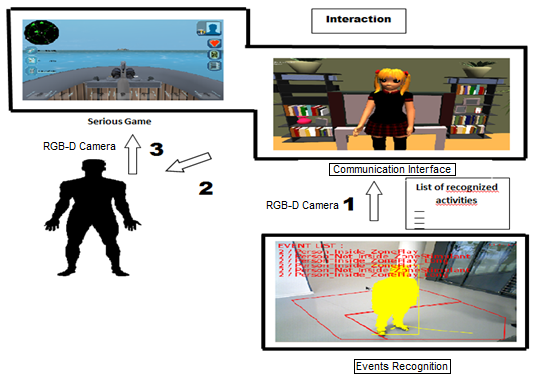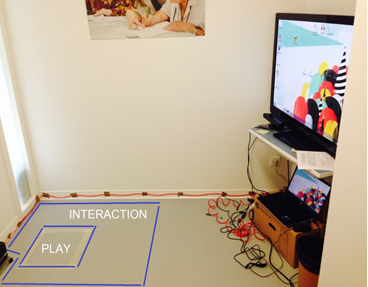Section: New Results
Assisted Serious Game for Older People
Participants : Minh Khue Phan Tran, François Brémond, Philippe Robert.
keywords: interactive system, elderly people, serious game
A system able to interact with older people has been recently devised. The system consists of two parts: Recognition and Interaction. Recognition part, requiring an Asus Xtion Pro Live Camera, consists in observing the scene to decide when is the best moment to interact with users. Afterwards, the Interactive system tries to engage the patient via an interface and through Microsoft Kinect Camera, the patient can interact with the interface using voice or gesture. The interface is designed with Unity 3D game engine (see figure 29 ).
An experiment was conducted in a memory center for older people, Institut Claude Pompidou in Nice, in order to test different functionalities of the system. Here, participants can experiment the system in a private room (see figure 30 ) equipped with a large screen and can start the game without having to use devices (mouse, keyboard). The "best moments" to interact with participants are defined when they stay more than 5 seconds in front of the screen. Once these moments are recognized, the interface of Interactive part is called. The avatar indicates the place to be for playing and starts the game.
19 older people have participated to the experiment. 16 succeeded to follow the indications of avatar up to the start of the game. Most of them have appreciated the interaction with the avatar. Even 13 of them have continued to play the second game after suggestion of the avatar.
Future work aims at looking at other indicators (behavior, gaze) that the system can rely on to improve user’s interaction.



